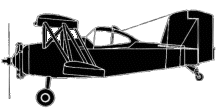
ASN Wikibase Occurrence # 297009
This information is added by users of ASN. Neither ASN nor the Flight Safety Foundation are responsible for the completeness or correctness of this information.
If you feel this information is incomplete or incorrect, you can submit corrected information.
| Date: | Saturday 6 July 2002 |
| Time: | 08:30 LT |
| Type: |  Grumman G-164B |
| Owner/operator: | Farm Air Flying Service |
| Registration: | N3631B |
| MSN: | 762B |
| Year of manufacture: | 1984 |
| Total airframe hrs: | 10600 hours |
| Engine model: | Pratt & Whitney R-1340 AN-1 |
| Fatalities: | Fatalities: 0 / Occupants: 1 |
| Aircraft damage: | Substantial |
| Category: | Accident |
| Location: | Sacramento, California -
 United States of America United States of America
|
| Phase: | Unknown |
| Nature: | Agricultural |
| Departure airport: | Sacramento, CA |
| Investigating agency: | NTSB |
| Confidence Rating: |
After taking off and initiating a left turn at an altitude of approximately 15 feet agl, the pilot heard a "loud bang and a sharp jolt as the airplane began shaking violently." The pilot leveled the wings and reduced power; however, the vibration did not subside. He then initiated a shallow right turn in order to land on a road. "As I began to maneuver for landing I saw a burst of flame from the exhaust and heard the engine quit and felt the aircraft settle." The airplane impacted a levee and flipped over, coming to rest inverted. During post-accident investigation of the wreckage, it was noted that the outboard section of one propeller blade was missing. The inboard section of the Hamilton Standard propeller blade was sent to the NTSB Materials Laboratory Division for examination. It was reported that the blade was fractured approximately 26 to 27 inches from the butt end. Optical examination of the fracture face found features consistent with fatigue progression over the majority of the fracture. Closer examinations revealed beach marks and other progression features indicating fatigue initiation at a mechanical dent on the camber surface near midspan. Further examination indicated that fatigue accounted for approximately 70% of the total fracture area.
Probable Cause: Propeller blade failure due to fatigue. A contributing factor was the rising embankment.
Accident investigation:
 |
|
Sources:
NTSB LAX02LA216
Revision history:
| Date/time | Contributor | Updates |
|---|---|---|
| 14-Oct-2022 13:22 | ASN Update Bot | Added |
Corrections or additions? ... Edit this accident description
The Aviation Safety Network is an exclusive service provided by:


 ©2024 Flight Safety Foundation
©2024 Flight Safety Foundation